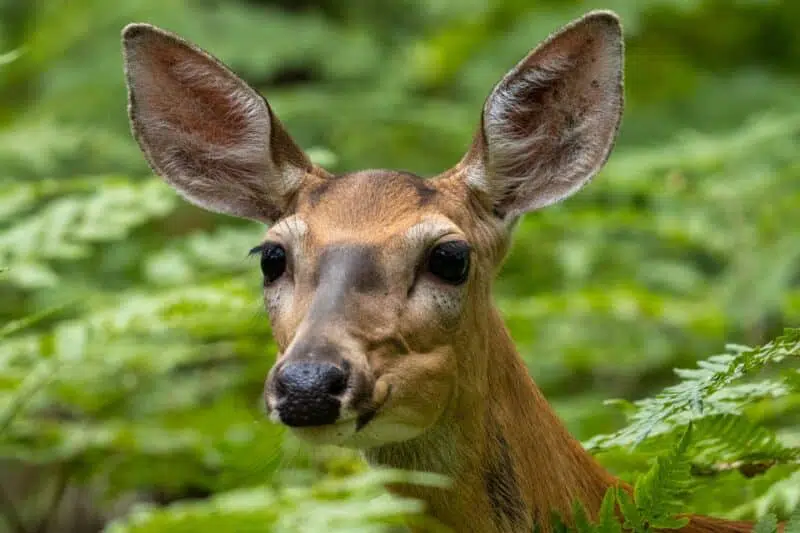Step into the enchanting world of Georgia, a U.S. state brimming with a stunning variety of animals and wildlife. While some of these creatures face threats to their existence, Georgia remains home to a delightful mix of critters. You can read more about the top 10 endangered animals in the United States with our dedicated article.
You’ll find armadillos, moles, bats, beavers, rabbits, and the elegant white-tailed deer. But that’s not all – the state is also home to formidable predators like bears, coyotes, bobcats, mountain lions, otters, skunks, and more. Join us on an adventure through Georgia’s wild landscapes, where every animal has a fascinating tale to share.
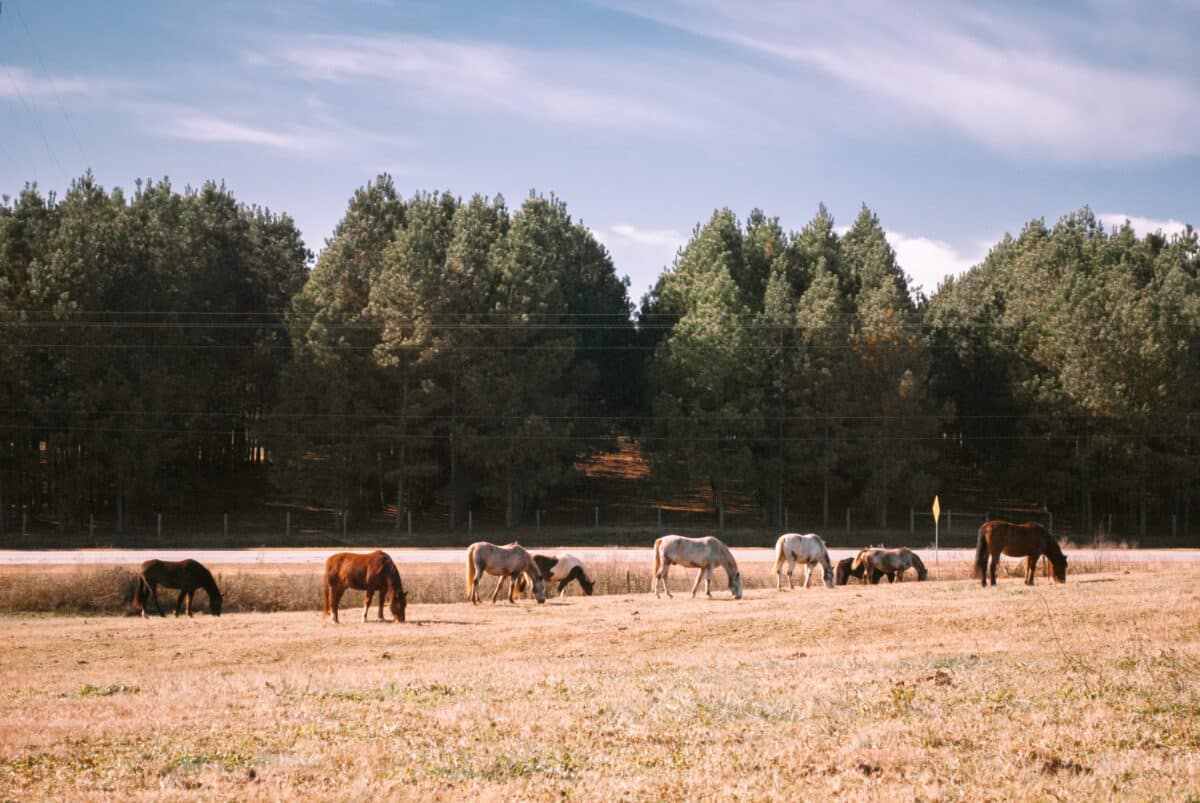
Many people visit George for its lively cities, but on the wild side, you will find alluring, exceptional beauty provided by Nature. The southern state offers you rich and unique experiences, and the Northern Appalachian Mountains are home to many of these animals, but it will be up to you where you wander.
Let’s check out the best of Georgia’s wildlife with our list of the most exciting and sought-after animals in Georgia.
Click below to any section on animals in Georgia:
Key Points
| Animal | Description | Habitat | Diet | Behavior and Reproduction |
|---|---|---|---|---|
| Brown Thrasher | State bird, common but declining. Territorial, mimicry, omnivorous diet. | Varied habitats | Nuts, berries, insects | Territorial, mimicry during breeding. |
| Largemouth Bass | State fish, olive-green scales. Prefers warm waters, feeds on insects, baitfish, and more. | Streams, rivers, lakes | Insects, baitfish | Solitary, territorial during spawning. |
| Eastern Tiger Swallowtail | State butterfly, vibrant yellow. Large, solitary, puddling behavior, emits putrid smell when touched by enemies. | Varied, treetops | Nectar, puddling | Large wingspan, vibrant colors, solitary. |
| White-tailed Deer | Medium-sized, adaptable deer. Feeds on twigs, fruits, leaves, nuts, and more. Rapid reproduction, seasonal adaptation. | Open areas, forests, yards | Twigs, fruits, leaves | Seasonal movement, adaptable diet. |
| Green Tree Frog | State amphibian, lime green with white stripes. Skilled climber, feeds on insects, worms, and more. | Swamps, lakes, trees near water | Insects, worms | Climbing ability, amphibious nature. |
| American Alligator | Recovered from near extinction, feeds on turtles, fish, birds, and more. Hibernates in dens during winter. | Swamps, marshes, rivers, lakes | Turtles, fish, birds | Large size, powerful bite, hibernation. |
| River Otter | Thriving in diverse habitats, excellent swimmers, feed on fish, insects, and small mammals. Active at dawn and dusk. | Lakes, rivers, marshes | Fish, insects, mammals | Excellent swimmers, active dawn to dusk. |
| Black Bear | Increasing population in northeastern Alabama and northwest Georgia. Omnivorous, mating season in late fall. | Forests, mountains, valleys | Plants, insects, animals | Mating season, active day and night. |
| Wild Turkey | Largest upland game bird, ground-nesting, forages in groups. Feeds on fruits, leaves, insects, and more. | Varied, wooded areas | Fruits, insects, animals | Ground nesting, powerful fliers. |
| Alligator Snapping Turtle | Restricted to river systems, distinguished by ridged shell and triangular head. Lures fish with a red, worm-like lure. | Rivers, lakes, adjacent waterways | Fish, carrion, insects | Aggressive defense, powerful bite. Habitat. |
Brown Thrasher
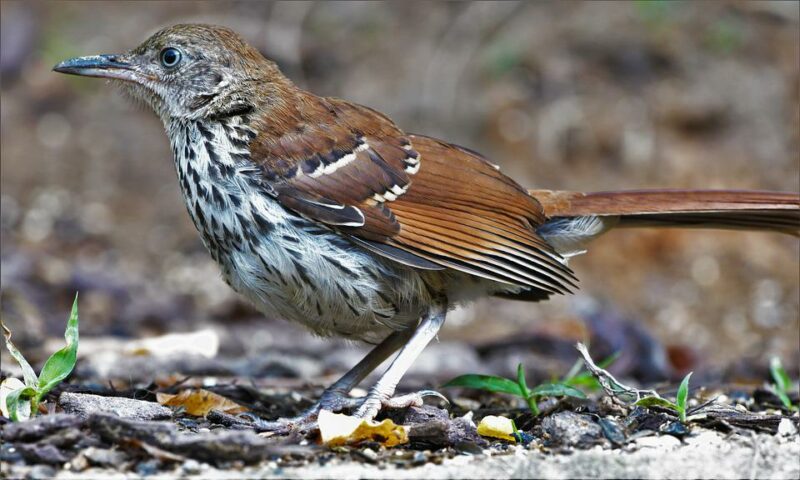
This official state bird of Georgia, the Brown Thrasher, is widespread. Fortunately, it is still quite a common sight in Georgia. Their numbers have declined due to the loss of their natural habitat, collisions with cars, etc.
They continue to decline. These are territorial birds, particularly when defending their nests, and they are not afraid of attacking anything that threatens them. They are noted for their mimicry, but not so much as the Northern mockingbird. But in the breeding season, the male impersonates sounds from many birds!
His name is believed to be ‘Thrasher’ because of the thrashing sound he makes when digging through ground debris looking for food. They have a varied diet which includes nuts, berries, insects, beetles, caterpillars, and others. They won’t turn their beaks away to other things like spiders, earthworms, crayfish, snails, frogs, and lizards.
Largemouth Bass
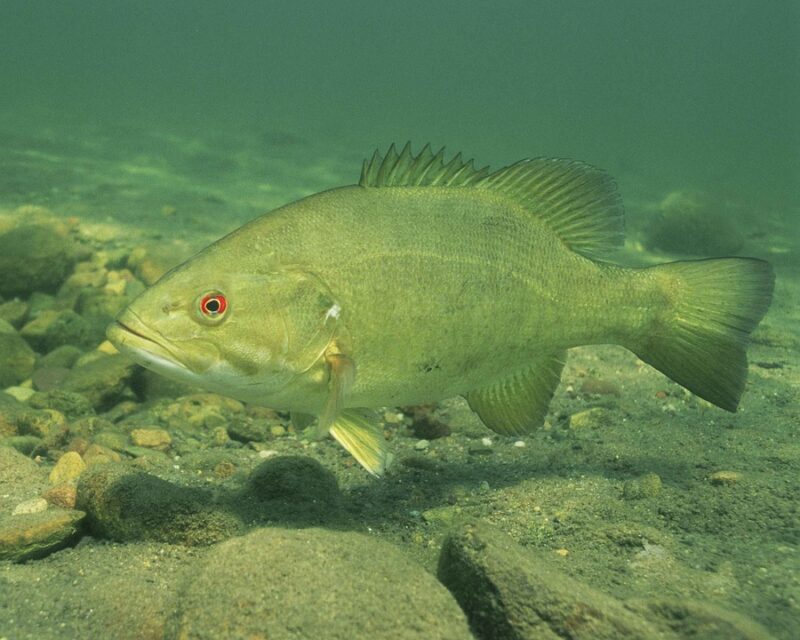
The magnificent largemouth bass was made the official state fish of Georgia in 1970. This fish has olive-grey-green scales on it. It likes to be in warm water streams and rivers of Georgia, with lots of vegetation.
It’s got other names too, so if you’ve heard people talking of Black Bass, Lineside Bass, Trophy Bass, Bigmouth Bass, or Green Trout, then you know they are talking about the Largemouth Bass. They grow about 8 inches in their first year of life already; by the time they are three years old, they already measure approximately 18 inches long.
Dark horizontal lines form on both sides of the fish. The bigger the fish grows, the bigger their prey, but they enjoy small insects, baitfish, scuds, and shrimp. They will also eat shad, crawfish, snakes, snails, small water birds, frogs, baby alligators, and lizards. They seize their prey by using vibration, sight, hearing, and smell.
Eastern Tiger Swallowtail
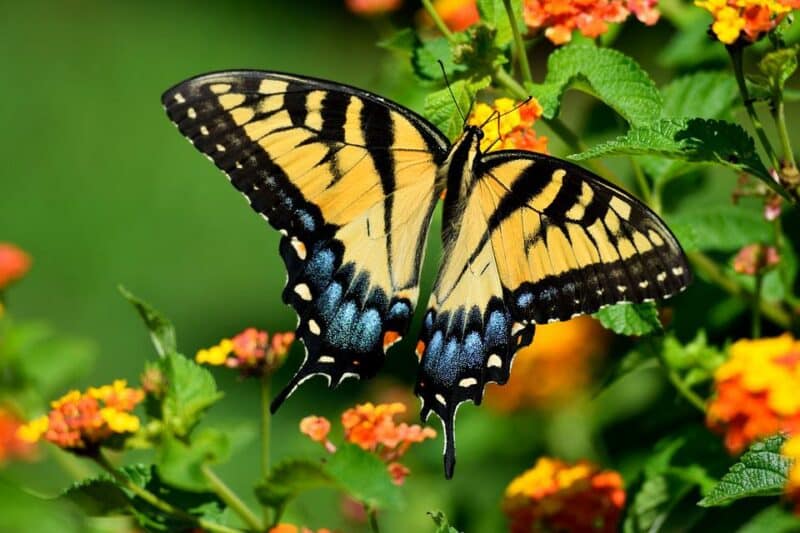
The eastern tiger swallowtail is lovely, as you can see. It was recognized as the official state butterfly of Georgia. They are common around this area. Who wouldn’t want these butterflies in your space, flying around? They are just magical creatures—these universally cherished insects are worldwide.
This is a giant butterfly, and when they are in the sun, their outspread wings can span around 5.5
inches from one tip to the other. Their colors are so vibrant – black strips edge the yellow wings. The bottom edges of the hind wings are very colorful, with bluish scales and one or more red spots. They are solitary creatures.
They will often fly high into the treetops. An incredible sight to behold is when a group of swallowtail males “puddles” This is when the males come together at damp places in the soil to drink water. Usually, this water has amino acids and sodium ions, which give them extra life. If an ‘enemy’ touches this butterfly, it will emit a putrid smell, which gets wiped onto the enemy. You will see this magnificent creature from the spring into the fall.
White-tailed Deer
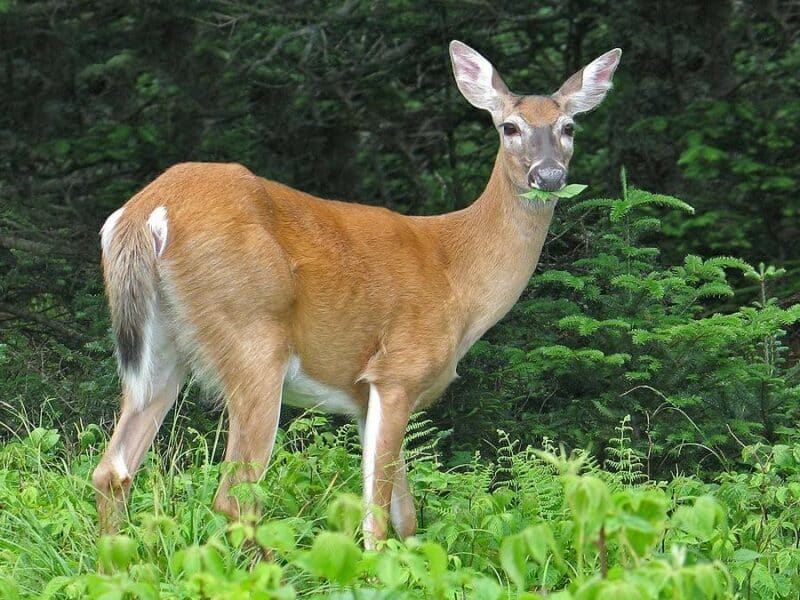
It, otherwise called Virginia deer, is medium estimated and local to North America, Central America, and South America. White-tailed deer got its name because of the white hairs under the tail and back end. White-tailed deer have various sizes. Found its body is more significant in relaxed environments and rural soil but more modest in treats and jungles. It has a ruddy brown to the grayish earthy colored body and huge ears.
They love to live in open regions and timberlands. During mid-year, white-tailed deer are found in timberland regions where the food is available more, and in the winter, theyy live in yards where they get legitimate food and security from cold breezes. They recreate rapidly and are equipped to multiply their number in a year.
During the beginning of relations season in November and December, a critical piece of the sentiment is finished at a run; various folks endeavor to remain mindful of the fast female deer. The lovemaking process is quick and matter-of-truth. The buck watches and mates with the female deer for the day before searching for another female deer in heat. Females become provincial before considering posterity.
The brooding period midpoints 200 and two days, with same-looking ones or twins, generally considered. In the wildernesses, expansion could happen throughout the year. Mothers occasionally raise young ladies to development and subsequently pull out, giving their home reach to the young ladies.
White-tailed deer could live isolated from each other in summer yet may approach tremendous gatherings in the winter on open meadows or forest areas. They trample down the snow region in a space otherwise called a “deer yard.” Food consolidates twigs, natural items, leaves, nuts, lichens, and parasites.
Green Tree Frog
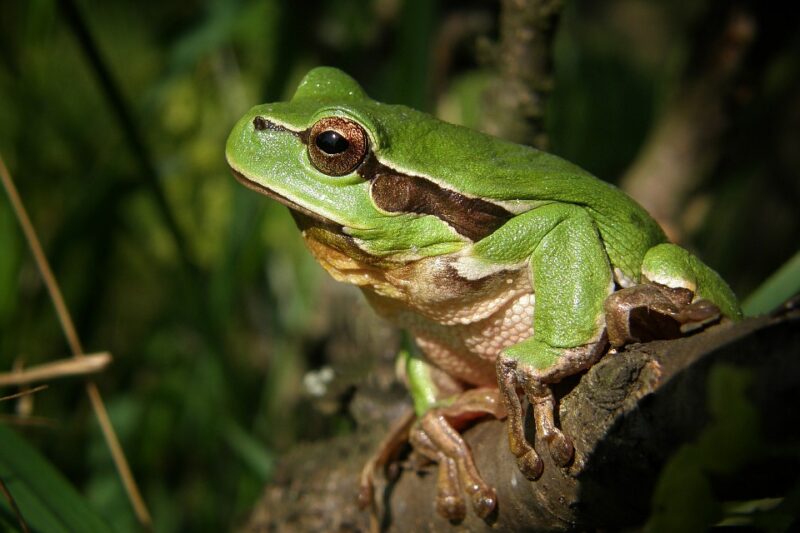
In 2005, the green tree frog became the official state amphibian of Georgia, and Georgia is home to around 85 different amphibian species. These cute little frogs are lime green with bright white stripes on each side of their smooth bodies.
They can be found throughout Georgia, and you can hear them chirping through the summer and spring months. With that smooth, green body, it makes sense that they are among North America’s most beautiful tree frogs, alongside other animals in Georgia.
Its legs are about one and a half times as long as its body, so now you know how well it can jump from around 8 to 10 feet should it need to. It’s got round pads for his feet to climb trees very quickly.
You will find these little critters in swamps, bayous, on the borders of lakes, on floating vegetation, and on trees and bushes near the water. As long as there is water and dampness around, he is OK. He enjoys crickets, houseflies, fruit flies, moths, ants, and worms – even crickets.
American Alligator
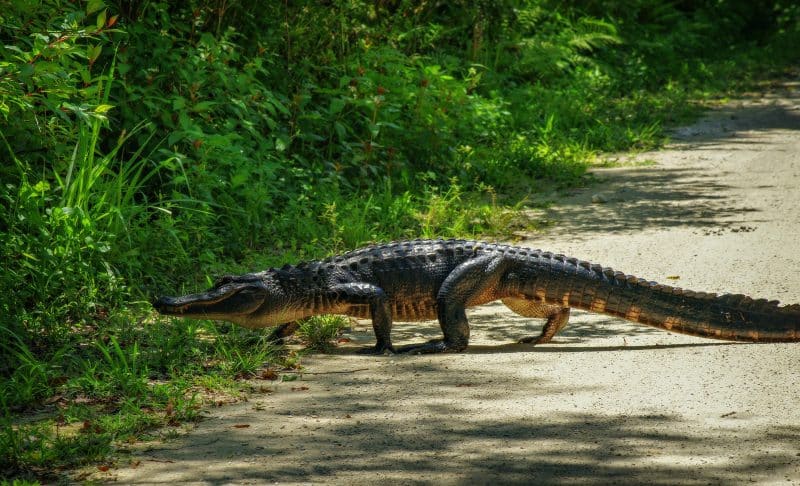
During the first half of the 20th century, the American Alligator was almost completely depleted due to exploitation. Still, their recovery has turned out victorious, and they are no longer on the near-extinction list. Their top jaw overlaps the lower jaw.
It’s what makes it different from the crocodile. They like to inhabit various areas in the USA, including Georgia. They can grow up to 14 feet and devour other foods to feed that large frame.
The diet will include turtles, fish, birds, reptiles, small mammals, and small alligators. If you want to find an alligator, look for them in freshwater swamps, marshes, rivers, lakes, and other small bodies of water.
Can you believe that the alligator has a mouthful of teeth to the tune of between 74 to 80 teeth? New teeth grow in to replace the lost and damaged ones. When the water gets too cold, their foraging ceases – like when the temperature drops below 68 degrees F.
The alligator hibernates in dens in wintertime, and it can live to be about 50 years old. The adult alligator does not have any natural predators after it. The babies, conversely, have to be cared for as otters, turtles, raccoons, cranes, and other alligators will eat them.
They prey on the nest where the eggs are and then eat the little hatchings. If they can reach around 24-30 inches or so, then instead of becoming the prey, they become the predators.
River Otter
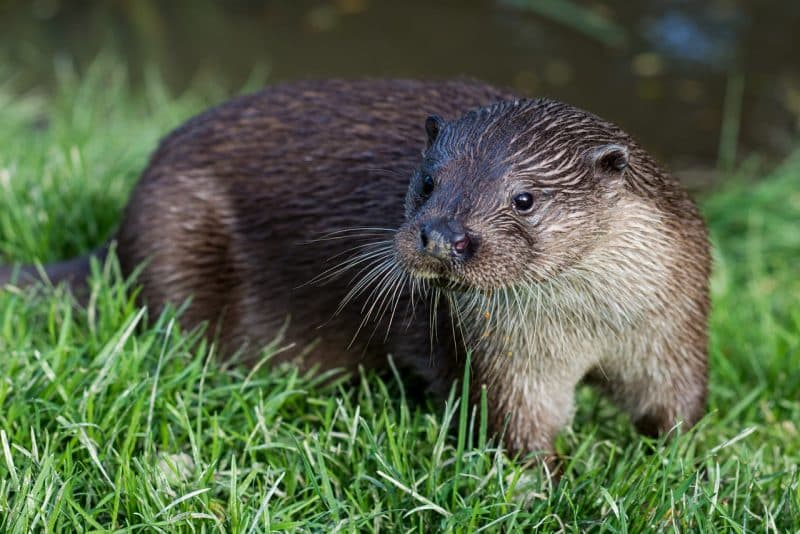
This cutest of animals, the river otter, is also a member of the weasel family and an amphibious member of the family. Many USA states have experienced a decline in river otters, but Georgia has remained relatively consistent with still thriving numbers.
Even in Northern Georgian, where they were almost depleted. Of course, their existence does depend on habitat availability and quality. These creatures have thick fur over their bodies, usually dark brown, black, or reddish, and their bellies are typically silvery or grayish-brown.
Their throat and cheeks are silver to yellow-brown. They can range from about three feet to almost five feet long, from the tip of their nose to the end of their tail. They weigh around 15 to 30 pounds.
The hind feet of the otter are webbed. The otter can stay underwater for about 4 minutes and dive to quite deep depths of about 60 feet. It can swim 6-7 miles per hour and run from 15 to 18 miles.
They become active in the early evening right through to the following day. These animals in Georgia love to be near lakes, marshes, ponds, and streams. The river otter is a carnivore and eats prey like young alligators and crabs, sometimes even muskrats. Their diet will include amphibians, crustaceans, reptiles, insects, birds, and fish. In the rivers, they dine primarily on fish.
Black Bear
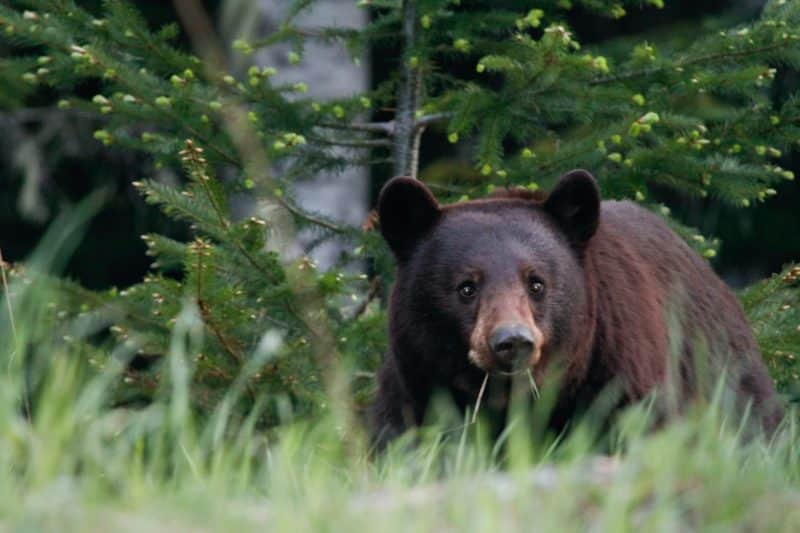
Black bears were found in the southwest of the Alabama region, but in recent years, their population has increased, dating from northeast Alabama to northwest Georgia. These bears are similar to Florida bears in look but are classified as subspecies. They are omnivorous mammals and belong to the Ursidae family.
Two subspecies of American black bears are found in the Alabama region. One is Florida black bear, and the other is Louisiana black bear. They are found in around 41 states of the United States and 43 countries near Alabama and other parts of Canada and Mexico. They are mostly found near Little River Canyon in Cherokee country in northeastern Alabama.
American black bears come in a range of colors, from deep black to light brown and even beige. While they may look somewhat similar to brown bears, they have their unique traits. These include larger ears and a smaller shoulder hump. Now, let’s talk size – male black bears tip the scales at 150 to 350 pounds, with some colossal individuals clocking in at a whopping 900 pounds. They measure 47-79 inches long, sport small eyes, sharp teeth, and curved claws designed for hunting and digging.
When it comes to maturity, these bears typically hit adulthood around 3.5 years of age, and they can start reproducing as early as two years in some cases. But here’s where it gets interesting – their breeding season can be quite the spectacle. From May to mid-July, it’s a polygynous party, with a single male bear courting multiple females. But here’s the twist: females delay gestation until they’ve packed on enough fat and secured sufficient food.
Then, in the depths of winter, around January and February, the bear cubs make their entrance. They find cozy homes in caves, root masses, or ground nests. As temperatures drop, the bears hibernate, enjoying long naps during the winter, only to awaken more active when the weather warms up. It’s a fascinating cycle in the life of these magnificent creatures.
Wild Turkey
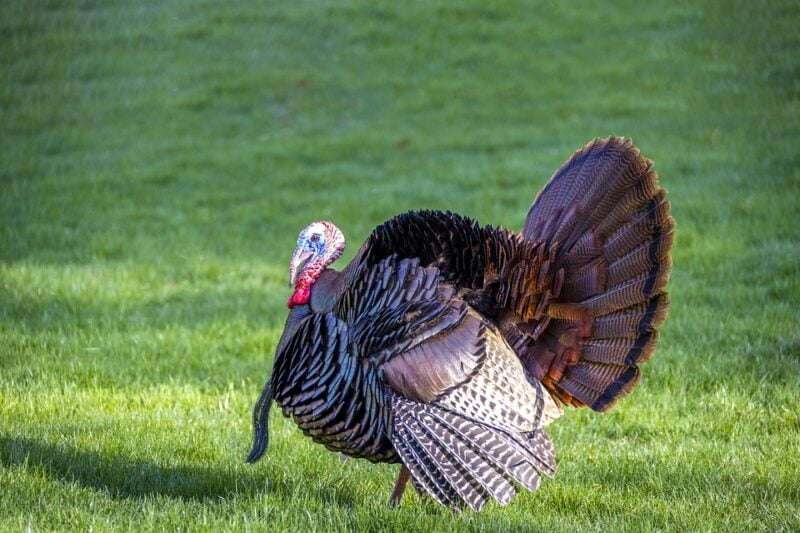
In Georgia, you’ll come across the wild turkey, the largest among upland game birds, with some males weighing in at over 20 pounds and standing three feet tall. These birds differ significantly from their domestic counterparts, being leaner, more slender, and sporting small, nearly bare heads.
During mating season, the wild turkey’s head undergoes a striking transformation, displaying hues of red, white, and blue. To fuel their highly active mating endeavors, males develop a layer of fat over their crop and breast cavity.
Known as “Toms,” male wild turkeys make their nests on the ground, favoring dense foliage for concealment and often foraging in groups. They utilize their muscular feet to scratch through leaf litter in search of food.
Despite their hefty appearance, wild turkeys are surprisingly adept flyers, taking to the skies when threatened, thanks to their broad, rounded wings.
Come nightfall, these wild turkeys roost in trees as a group, often choosing locations near fields and roads. Their eggs are distinctive, speckled, and larger than chicken eggs.
Wild turkeys have diverse dietary preferences, with approximately 90% of their diet consisting of plant material and the remaining 10% comprising animal matter. Their menu includes fruits, green leaves, insects, seeds, buds, and even cultivated crops like grain, sorghum, chufa, tubers, and millet. These birds are constantly on the move, covering several miles each day in search of food across various habitats.
Alligator Snapping Turtle
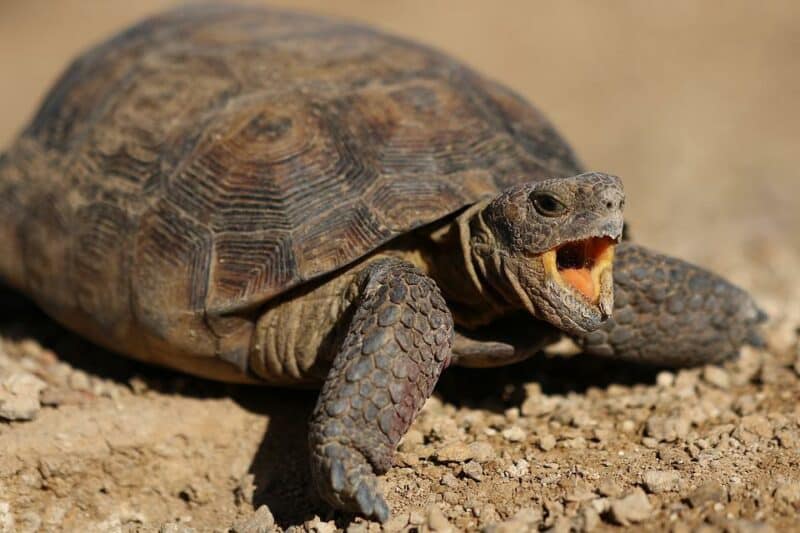
There is a slight difference between the alligator and the common snapping turtle. Both of them look pretty prehistoric. But they are slightly different and are, in fact, distant cousins. But they have some critical differences. The alligator snapping turtle is the one we are talking about, and it has a very restricted natural range. It only lives in the river systems that drain into the Gulf of Mexico’s northern coast and east into southern Georgia.
The alligator snapping turtle likes deeper waters that move a lot, but now and then, you will find them in a lake. Sometimes you will also find them in other kinds of waterways that adjoin rivers. Maybe the most noticeable difference between the alligator snapping turtle and the common snapping turtle is their shells. There are three distinct ridges on the surface of this turtle. As far as the skull is concerned, the alligator snapping turtle has a triangular head.
The common snapping turtle has a head that is ova-shaped. An alligator snapping turtle has two distinct features distinguishing it from the common snapping turtle. One feature is its red, worm-like lure in its mouth. So when it opens its jaw, unsuspecting fish take it for a worm – as they get closer to investigate, they are snapped into the mouth of the alligator snapping turtle for a quick meal.
They are tanned in color to black as well. The sharp cutting edge on their mouth can bite
your finger off, so be careful around a snapping turtle – leave them alone. They don’t have many predators who want to eat them, but now and again, they will face an attack from bears, coyotes, and river otters. And sometimes, when its territory overlaps with the American alligators, it must watch out.
Summary of Animals and Wildlife in Georgia
How amazing are these animals of Georgia? If you are hoping to travel to North America to uncover wild and rustic beauty, look at some of our state-categorized wildlife blogs; animals in Ontario and animals in Florida. Let us know what you think and which state you’d love to visit first!
- Animals and Wildlife in Colorado - April 24, 2024
- Best Places to see Sloths - April 24, 2024
- Where to See Alligators in the Wild - April 24, 2024

